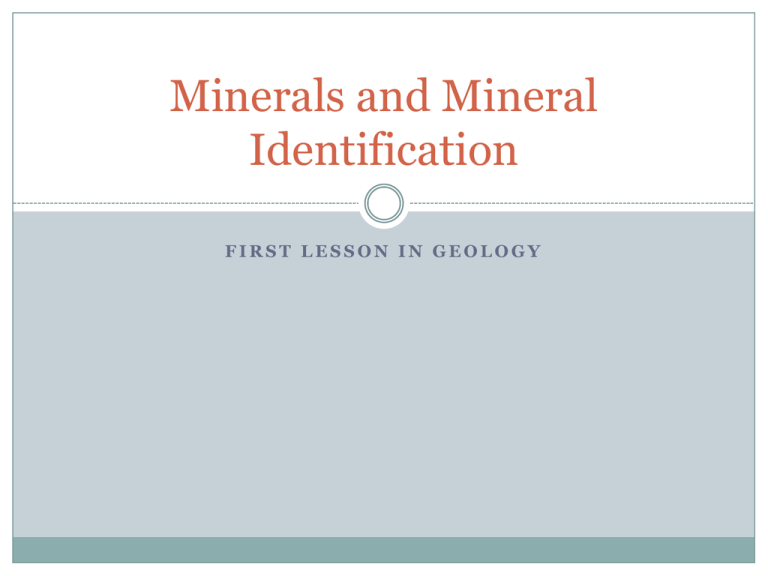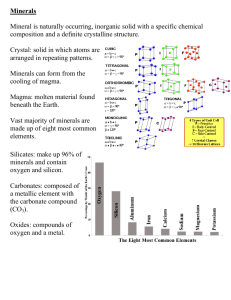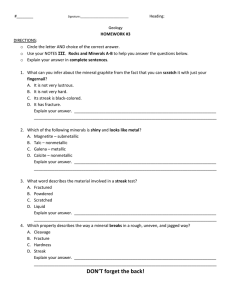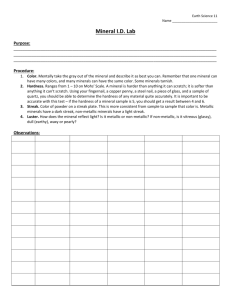Minerals and Mineral Identification
advertisement

Minerals and Mineral Identification FIRST LESSON IN GEOLOGY What is a Mineral? A. Mineral: A naturally occurring, inorganic solid substance that has a definite chemical composition. 1. This means that it is NOT manmade, that it DOES NOT come from something living or once living, and what it is made up of is known. What Gives Minerals Their Physical Properties? 2. The internal arrangement of atoms gives minerals their different physical properties a. These properties include things like: hardness, breakage pattern and streak b. An example of minerals that have the same composition but different physical properties is: graphite and diamond c. Graphite = pencil lead d. Diamond= hardest mineral, valuable! B. Properties Used to Identify Minerals 1. Color a. It is difficult to tell what a mineral is based on color because minerals can be multiple colors and many minerals are the same color. 2. Streak themore powder reliable formthan of a color mineral 3. Luster how light reflects off a mineral a. metallic b. non-metallic -looks like a metal -Leaves a dark (black, grey, green or brown) streak on a white streak plate -looks earthy, waxy, greasy or brilliant -leaves white or no streak on a black streak plate 4. Cleavage -mineral breaks in a predictable pattern because of its arrangement of atoms -At least one distinct flat side when broken 5. Fracture -the mineral breaks randomly -Irregular sides 6. Hardness 1. resistance to being scratched- a softer material cannot scratch a harder material 2. It is NOT the same as breaking! For example: You can break glass easily with steel. However, steel will not scratch glass. Do not write: Hardness MOH’S SCALE OF HARDNESS Hardness Mineral Hardness Mineral 1 (softest) TALC 6 ORTHOCLASE 2 GYPSUM CALCITE FLUORITE 7 QUARTZ TOPAZ CORUNDUM APATITE 10 (hardest) 3 4 5 8 9 DIAMOND





